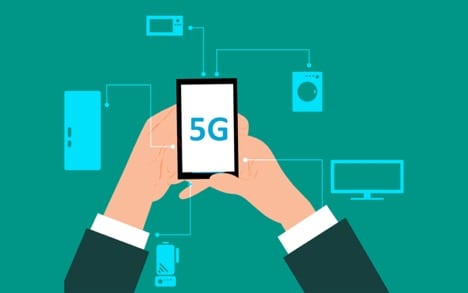
Image credit: PxHere
There are many qualities essential for being consistently successful as an ecommerce seller, but one that holds an increasingly-key position is adaptability. If you look around, you can find some small brick-and-mortar stores in advantageous positions that haven’t significantly changed in decades — no such luck for their online rivals. When all you have is a digital presence, you can be overtaken in the blink of an eye by a fresh alternative.
This is why the biggest brands in the world are perpetually plunging funds into new tactics and technologies. For all their dominance, they’re fundamentally susceptible to being supplanted — Blockbuster probably thought it had an unassailable position, and we know how that turned out.
And on the topic of new tactics and technologies, there’s much to be said about the rise of the internet of things (IoT) — something widely misunderstood but at least recognized as hugely significant to the future of business. It has countless useful applications, but what we’re going to look at here is how it can benefit the ecommerce world in particular.
Given the steady growth of the IoT market, what can ecommerce brands do to take advantage? Let’s take a closer look at the possibilities:
Glean rich insight into shopper habits
At this point, ecommerce essentially runs on big data. Having all orders handled through online systems produces vast quantities of data that can be parsed to identify patterns and prospects. For instance, if a store can see that two products are commonly purchased together, it can infer that there’s a connection and start suggesting that combination. Amazon led the way in dynamic recommendations, and the system has come ever closer to being an industry standard.
But the IoT can take this to the next level by drawing data from myriad other devices. Imagine being able to gather rich location-based analytics through the interaction of IoT devices dotted throughout the world — you could build a fascinating picture of when, where and how people spend money. Setup of Google Analytics is already a core part of the standard ecommerce launch process, and it could easily be extended to factor in a broader spectrum of inputs, allowing businesses of all sizes to plan out complex marketing funnels.
Enhance fulfillment and tracking
In ideal circumstances, the process of collecting and packing items would be fully automated. Imagine a future of entire warehouse operations being governed almost exclusively by robots — collect an order, relay it to the warehouse network, and have a range of IoT-connected devices cooperate to identify, collect and transport the products to the packing area.
But the IoT support wouldn’t stop there. The tracking process for ecommerce shipments can be stilted, particularly for long-distance shipments — consider that global selling is becoming far more common (particularly with merchants using international ecommerce platforms for easy tax calculation). IoT devices will help significantly by providing steady streams of data on everything from exact locations to atmospheric conditions, allowing sellers to massively optimize both their supply chains and their shipment processes.
Not only will this result in faster turnaround times and fewer items being lost or damaged, but it will also enhance customer service — instead of wondering how far away their deliveries are, and needing to wait around just in case, buyers will be able to closely track progress and estimate arrival for themselves (Amazon already does this in many areas to a basic extent).
Enable personally-targeted marketing
The B2B world yields a lot of success with account-based marketing (ABM): a tactic that involves creating a distinct marketing strategy for each client, tailoring it exactly to the client’s nature and needs. Could you do something similar for B2C? Well, you’re often marketing to people who aren’t customers yet, and even if you only market to customers, It would be too onerous to manually cater to their account preferences.
The IoT, however, has the potential to allow ecommerce brands to target specific people. How? By having automated marketing systems use IoT links to identify specific shoppers and serve sequential marketing materials to each one. Think about contextual clues, particularly those provided by mobile devices: whenever a visitor arrives at a store, the system can study their location, IP address, and — most importantly — linked accounts. From that analysis, it can determine exactly what content to provide.
Streamline stock management
While ecommerce ordering resides in the cloud, it relies upon physical operations. There’s no getting away from that part — barring occasional digital products such as guides or tickets, orders can’t be shipped over the internet. And it’s those physical operations that tend to remain stubbornly inefficient, particularly for cost-cutting online retailers that lack the resources to invest in hiring and training additional warehouse staff.
As the cost of IoT devices falls, though, they’ll become highly accessible for smaller retailers, allowing them to take control over their stock in a much easier way through implementing sophisticated infrastructure. With sensors of various kinds monitoring their warehouse space, they’ll be able to allow their systems to automatically gauge and replenish stock as required.
At the same time, those systems will be tracking order patterns, as well as making suggestions about optimal warehouse layouts (it might make more sense to group up items that are often purchased together, cutting down on time spent fulfilling orders). And with smart locks keeping everything protected, security will be significantly easier as well
The IoT world is full of promise, and with the ecommerce industry having a strong track record of adopting new techniques (it is highly profit-driven, after all), we have every reason to expect that big brands will move in the directions we’ve looked at. If you run an ecommerce store, adopting IoT-centric methods won’t simply be something you dabble in — it’ll soon be a necessary component of staying competitive.
Featured photo by Clark Street Mercantile on Unsplash



